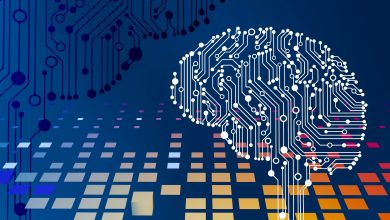
Creating an AI agent that adapts to the size of your business takes more than coding a chatbot or automating a workflow or two. It involves making a learning system that can devise solutions to the evolving data, customers, and complexity of that organization. This guide will present you with 7 steps to build an AI agent in less time and effort – from the blueprints to the actual product so that you have a scalable and business-driven solution.
If you are trying to build an agent from scratch or are improving a prototype already built for use in production, the steps to help you follow the design process are effective and sustainable.
1. Define the Agent’s Core Purpose and Scope
Before writing a line of code, ensure you know the goal of your AI agent. AI projects suffer from failure, much like other IT projects. The most important reason is vague or overly broad objectives.
Ask the following:
- Which problem is the AI agent supposed to solve? (e.g. support automation, data analysis, and decision-making support).
- Who is going to use the product? Define internal teams, customers, or system endpoints.
- What kind of intelligence is necessary? Rule logic, natural language processing, predictive analytics or multimodal?
When building an AI agent, the scope defines the whole architecture – the building blocks, which include training data, APIs, and the model to deploy. A clear purpose will reduce cost overruns and ensure that your AI strategy is closely aligned with business goals.
2. Build an AI Agent by Selecting the Right Data Infrastructure
Data is the foundation of any scalable AI agent. Even the best models will not be able to adapt or scale without an observability data pipeline.
Key steps for data readiness:
- Recognizing data sources of internal databases, CRM, APIs, and others
- Consider creating a data lake or quadrant with scalable storage on AWS S3, Google BigQuery, or Azure Synapse to combine structured and unstructured data.
- Make sure everything is compliant with the right practices. Set up data validation pipelines and anonymization for governance.
- Make sure the advice can be accessed at all times, so your education agent is able to modify itself with the latest insights.
Having a custom AI agent built on top of a flexible data backbone means that it can be updated with little retraining. It will not degrade in performance as your dataset grows.
3. Design a Modular AI Architecture
Design your AI agent for business with scalability in mind right from the outset in a startup business. Long-term effectiveness of a system depends on whether the system is monolithic or modular.
Recommended architectural layers.
-
- Input Layer: This one performs data entry of sensors, text, or API.
- Processing Layer: It comprises preprocessing, feature extraction and normalization of data.
- The Intelligence Layer contains the main AI models: LLMs, NLP, reinforcement learning agents, etc., or hybrids.
- Action Layer: It implements decisions, produces outputs or initiates workflows.
- Feedback Loop: Measures the performance and recapitulates the real-life results in the model, and keeps learning.
When you separate these layers, the engineering team can upgrade or swap out components without disturbing any other components on the pipeline.
4. Building an AI Agent Requires Choosing the Appropriate Model and Tools
The model defines how the agent behaves. The right choice depends on your use case, performance expectations, and available computational resources.
Model options for building an AI agent:
- Generally, rule-based agents are ideal for predictable workflows or controlled environments.
- Agents that use machine learning are useful in data-rich environments where adaptability is essential.
- LLMs such as GPT, Claude, and Llama are efficient at conversation or generation tasks.
- Reinforcement learning agents are helpful. They can continuously optimize decisions in dynamic systems.
Tooling ecosystem:
- Software programs like TensorFlow, PyTorch, LangChain, and Hugging Face Transformers.
- Use MLOps tools like Kubeflow or MLflow for deployment and monitoring.
- Integration APIs are based on REST, GraphQL, or WebSocket services.
By selecting the right combination, you can create an AI agent that is resilient and cost-effective in cloud or hybrid environments.
5. Implement Robust Training and Testing Pipelines.
Scalability starts in your development environment. Creating an AI agent from the ground up involves not only training models but also building an iterative ecosystem around it.
Best practices for training:
- As you build an AI agent, divide the data into a training set, validation set, and test set to avoid overfitting.
- Monitor datasets and model versions using DVC or Git-like version control systems.
- Set re-training workflows that are triggered by new data and performance drops.
- Make sure to unit, integration and stress test at each of the pipeline stages.
Performance monitoring shouldn’t just stop at accuracy; latency, satisfaction and efficiency matter too. Scalable AI agents improve with every iteration and learn more quickly.
6. Integrate Securely Into Business Workflows.
An AI agent only makes an impact when it’s part and parcel of the business process. The integration has to be seamless, compliant and secure with IT policy.
Integration essentials:
- We have documented APIs for any other CRM/ ERP or internal systems.
- Make sure that sensitive data is securely protected by using OAuth 2.0, JWT, or role-based access control.
- Keep a record of your operations and logs for a better understanding and debugging with the help of app monitoring and logging.
- Create fail-safe measures for the model to default back to when in doubt.
Security has to change in the same direction as functionality. With the growth of your business AI agent, regular penetration testing and model interpretability audits help ensure company compliance and credibility.
7. Roll out, Expand, and Sustain
After your AI agent has proven itself to be dependable during testing, the deployment must focus on elasticity and observability.
Deployment checklist:
- Put applications into “containers” to run them anywhere.
- Take advantage of platforms like Kubernetes for scaling orchestration.
- Use Prometheus, Grafana, watching or OpenTelemetry technology to monitor.
- Consider incorporating A/B testing or reinforcement loops in your feedback system.
- Collect usage data and use it to retrain and update.
An agent that goes through regular improvement means it will scale as per your needs and adapt to changing business conditions, technology stacks and user expectations.
Partnering for Expert AI Agent Development
The growth and development of an AI solution require a very good understanding of domain expertise. If your organization wants to speed up development or avoid architectural pitfalls, consider getting professional help from a specialized AI engineering team.
Redwerk offers AI agent development services that design, train, and deploy a custom AI agent for your enterprise. Their teams specialize in designing scalable architectures, securing data integrity, and implementing secure deployment pipelines that help companies build intelligent solutions that work under real-world conditions. Experts can help you build a conversational assistant, a predictive engine, or a complete autonomous AI workflow with less risk and quicker time to market, along with technical excellence.
The Steps to Build an AI Agent Must Yield Commercial Success
If you want to build an AI agent that truly scales (like your business), then develop it as an evolving system, not a project. To ensure the long-term scalability and innovation of your agent, you must define its purpose, create a modular architecture, secure the data infrastructure, and embed continuous learning.
Companies that use automation powered by artificial intelligence must pay attention to engineering rigor, governance, and scaling to achieve success and not failure. Use these seven steps to create a custom AI agent that provides sustainable value, operational resilience and business impact.




